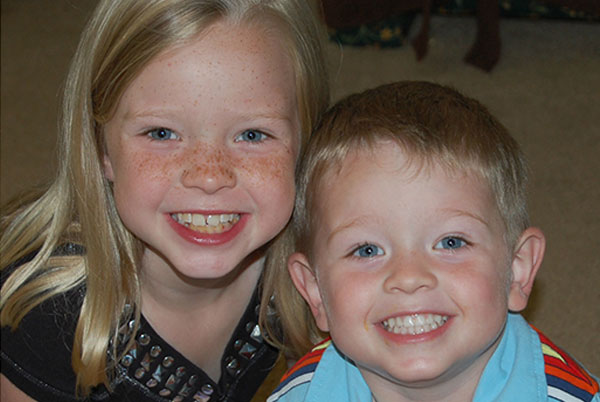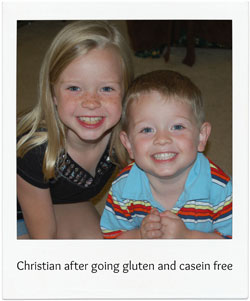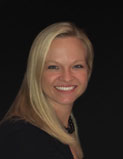
Share Your Story: Alysun Caldwell

“Pervasive Developmental Delay Not Otherwise Specified (PDD-NOS). It has a slightly better prognosis than many other kids on the spectrum. You’ll learn to manage his behaviors.”
I know I heard more than that, but the pediatrician’s words seemed like they ran together in a sea of statistics and milestones my son had not met by the age of three. He had been developing normally until 18 months, but by his second birthday, Christian had gone silent. By his third birthday, the silence had given way to frequent tantrums. The doctor suggested Applied Behavioral Analysis (ABA) to help with behaviors and learning, but the words that stuck out in my mind were “you’ll learn to manage his behaviors.” Thanks for the hope.
Our saving grace lived a few houses away from us: Nancy was an ABA therapist and an autism mom herself. Nancy and her supervisor came over for the introductory session and handed me the book Healing Our Autistic Children by Dr. Julie Buckley. The supervisor asked questions like, “How is his pain tolerance? How are his stools?”
 He feels pain? And the stools were awful. I kid you not – he lived on cereal, chips and cheese. Nancy encouraged us to take gluten and casein out of his diet. I read in the book about how his body was likely not breaking down the gluten and casein proteins properly, with the resulting molecule mimicking an opiate. That explained a lot!
He feels pain? And the stools were awful. I kid you not – he lived on cereal, chips and cheese. Nancy encouraged us to take gluten and casein out of his diet. I read in the book about how his body was likely not breaking down the gluten and casein proteins properly, with the resulting molecule mimicking an opiate. That explained a lot!
For a kid who literally ate nothing except the foods I was trying to remove, it was a long process to cut those out of his diet. We had been enduring five to six tantrums a day, most days that lasted 45 minutes or longer. I won’t go into detail, but having two older children makes you think you know what a tantrum is. Not even close. The military offered me respite care to help me cope with the stress, but the facility would not let me bring gluten- and casein-free (GFCF) food for him. So he ate lunch there twice a week while I fed him only GFCF foods at home. The tantrums continued. I began to lose hope that the diet change would help him. During my husband’s leave before our next move, we removed Christian from the respite service. Now being completely GFCF, we would know for sure if diet change helped. After only one week, the tantrums immediately dropped to only one or two per week. The color came back to his face and there was light returning to his eyes. There’s the hope!
Having been GFCF for almost four years, our son is completely different and so are our lives. We still have challenges, but we are hopeful for his future. He captures the heart of everyone who knows him, especially the tutors who still help us to this day. I am grateful for each of them, but especially for Nancy showing us that hope was real. My sweet, wonderful boy might have been trapped forever in his diagnosis without dietary intervention.
For a long time, the rest of our family ate gluten when Christian wasn’t around. Eventually, it was just easier to only prepare gluten-free foods and then add anything extra we wanted. After years of research and dietary/biomedical intervention for our son, I came across an article that listed signs to look for that indicated gluten intolerance. I had every one! But that’s a story for another time. Fast forward to now and our entire family is gluten-free, healthier than ever and loving it!
 ABOUT THE AUTHOR:
ABOUT THE AUTHOR:
Alysun Caldwell is a Marine Corps spouse and mom to three wonderful children. She currently resides in Yuma, Arizona, where she homeschools and supports families going gluten free. She is reversing her son’s autism with diet change and biomedical intervention.



